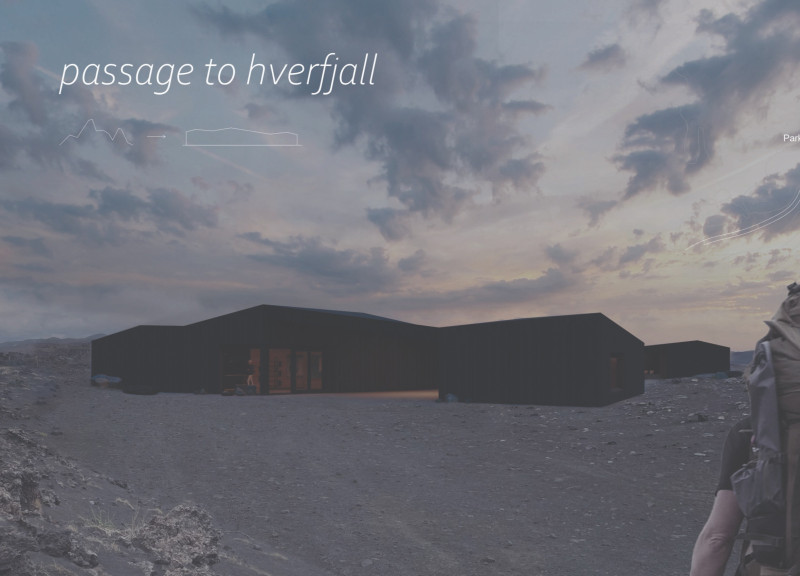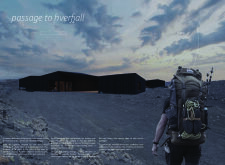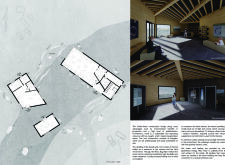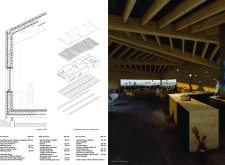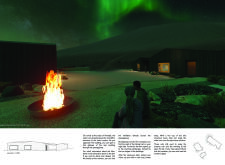5 key facts about this project
The primary function of the visitor center is to provide information and amenities for tourists exploring the Hverfjall volcano and its vicinity. The design includes spaces for exhibitions, leisure areas, and an information center. A central pathway guides visitors through these diverse functions while maintaining a connection to the outside environment.
Distinctive Material Choices
The project is notable for its use of locally sourced materials that reflect both cultural and environmental contexts. The exterior is clad in charred timber, a choice that acknowledges local building traditions and offers protection against harsh weather. This unique cladding technique not only enhances durability but also provides an aesthetic link to the volcanic surroundings. Interior spaces are finished with light pine wood, creating a warm and inviting atmosphere for visitors. Additionally, locally sourced volcanic rocks are used for landscaping and pathways, further blending the built environment with natural features.
The structure’s design promotes sustainability through thoughtful material selection and energy-efficient systems. The integration of rainwater collection and geothermal heating systems supports environmental responsibility and minimizes the ecological footprint of the architecture.
Visitor Experience and Spatial Organization
The spatial organization of the visitor center ensures that the different functional areas are easily accessible and promote a natural flow. The layout consists of two main components: the information center and a separate exhibition space. The design transitions visitors from the information area through serene passages that open to communal spaces. Large windows throughout the building frame significant views of the Hverfjall volcano, enhancing the visitor experience by drawing attention to the landscape.
Moreover, the design incorporates multifunctional spaces, allowing for various visitor activities, including education and recreation. This versatility supports the center's role as a hub for both tourists and local residents, creating an inviting atmosphere for diverse engagements.
Exploration and Further Insights
The "Passage to Hverfjall" project exemplifies an architectural approach that prioritizes alignment with the natural environment while fostering community interaction and education. Its thoughtful use of materials and design strategies sets it apart from typical visitor centers, emphasizing sustainability and cultural relevance. For further insights into the architecture of this project, readers are encouraged to explore architectural plans, sections, designs, and ideas that provide a complete understanding of the design intent and execution.


